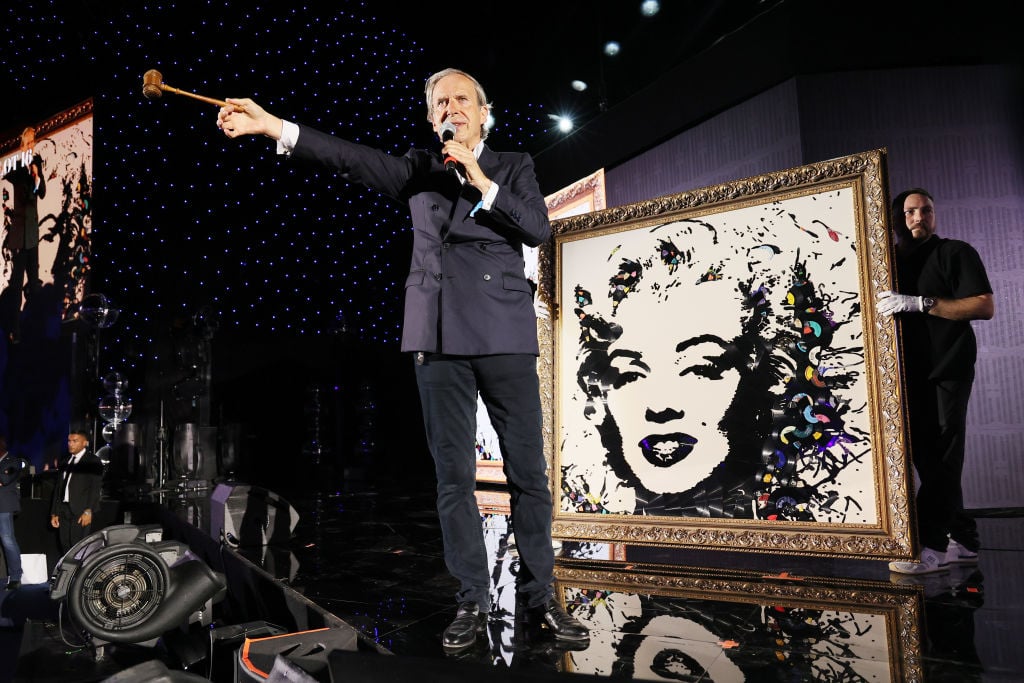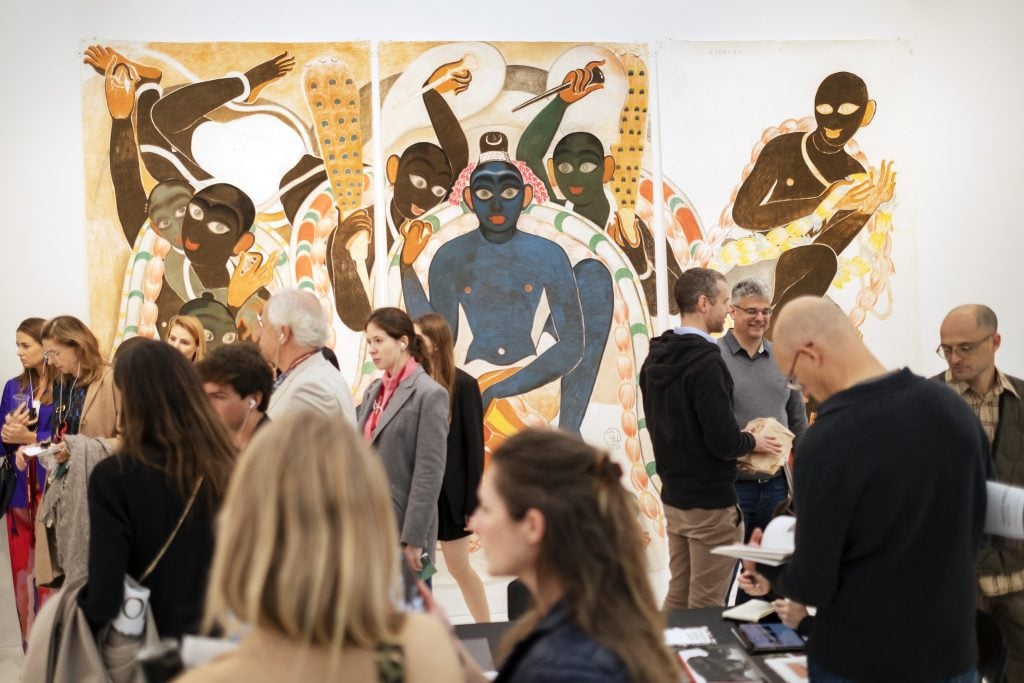The Hammer
New Year, New Market: Simon de Pury on How the Art Market Can Survive 2023
The veteran auctioneer shares his thoughts on the coming year.

The veteran auctioneer shares his thoughts on the coming year.

Simon de Pury

Every month in The Hammer, art-industry veteran Simon de Pury lifts the curtain on his life as the ultimate art-world insider, his brushes with celebrity, and his invaluable insight into the inner workings of the art market.
As we settle into a new year, there are always things we want to see less of, things we hope to see more of, as well as things our own personal insight leads us to predict will change regardless of our personal wishes.
With a tough economic climate looming ahead, here’s what Simon de Pury has to say about what 2023 may have in store for the art market.
1. Join Market Bandwagons at Your Own Peril
Last year saw the prices of an unprecedented number of emerging artists climb at the speed of light from prices of $10,000 to in excess of $1 million. For collectors this resembles a hot potato competition where the one holding it last risks getting seriously burnt. When you look at auction results for some formerly red-hot artists, you can see that some of these journeys end up, price wise, right where they began. So before joining enthusiastically the bandwagon, assess your tolerance to pain.
2. Take a Long View
When a wave builds up momentum it carries everything with it. When the wave eventually comes crashing down very few things survive it. Those that do will be around in the long run. Work out who has the staying power to last out the wave and ignore the rest.
3. Don’t Follow Trends
The pendulum swings back and forth. While not that long ago it was all about process based abstraction it is now all about neo-surreal figurative art. The works by emerging artists you pick don’t have to be in the general trend.
4. Turn Away From the Emerging
Look at the undervalued mid- to late career artists for whom the consensus already exists and whose works are in both private and public collections in all parts of the globe. Financially the entry level will be much higher, but the risk factor of them losing up to 90 percent of their acquisition price, nearly nonexistent.
5. Think Small
The temptation for many artists is to produce XXL works. Their salability however diminishes above a certain size since only a fraction of the expanding number of billionaires own palaces with super high ceilings and extra wide walls.

Stevenson, Frieze London 2022. Photo by Linda Nylind. Courtesy of Frieze and Linda Nylind.
1. Crowd Crush at VIP Openings
VIP art fair openings that are so crowded that you are unable to move let alone look at an artwork properly. Or maybe the answer is to come on a regular day and that, like at the airport, the fast track very often turns out to be the slow track.
2. Gmail Art Advisors
That maybe there are slightly less socially ambitious young men and ladies who instantly call themselves art advisors once they have visited an art fair or one or two museums.
3. Round Trip Tickets for Artworks
That even while the pandemic related restrictions are being lifted in most places the art works themselves travel less. Covid has proven that the vast majority of artworks that get sold are being bought by people who have not seen them physically. It is therefore not necessary for artworks to be shipped a number of times around the world before they end up with their new owners. The physical condition of the works of art, the cost basis for the galleries and auction houses as well as the environment will only benefit.
4. Artistic Pollution
In most professions being mediocre doesn’t leave traces. The accumulation of poor quality physical art takes up a lot of space. Maybe that’s one of the advantages of digital art.
5. Market Rivalries
The hypocrisy behind the ‘rivalry’ of auction houses and top galleries. What is good for the primary market is good for the secondary market. When auctions or fairs are successful everybody benefits.
Simon de Pury’s digital avatar conducting a primary market aucton on de-PURY.com. Image courtesy Simon de Pury.
1. Primary Market Auctions
I was pleasantly surprised that after the great success of my first primary market only auction the idea was immediately copied by others. Sotheby’s and Hauser & Wirth were quick to follow. I expect most other top galleries to follow in 2023. The main commercial galleries will finally be able to offer the artists they represent a full service.
2. An Online Marketplace
How quick most of the established art dealers were to revert back to conducting their business as if Covid had never happened. Despite that I expect the big technological strides done by the art market during the pandemic to continue at a fast pace. The market will morph into a 24/7 all year place and leave seasonality behind.
3. Slower Trend Cycles
How the steep price hikes of red hot artists were fueled more by a shopping mentality than by discerning choices. The acceleration of change of taste was faster than ever. I expect the evolution of taste to slow down somewhat in 2023.
4. Philanthropic Sales
I was pleasantly surprised to note in 2022 that most players in the field now view a charity component essential to their activities. I expect this to spread and become a must for all participants.
5. Digital Art
“NFT,” the most used word in 2021 and part of 2022, may have become totally taboo. It has been replaced by “digital sculpture” or “data artwork.” Regardless of what you call it, digital art is here to stay and the most exciting developments are ahead of us. This will not be unlike what happened in the tech world after the burst of the dot com bubble twenty years ago.
Simon de Pury is the former chairman and chief auctioneer of Phillips de Pury & Company, former Europe chairman and chief auctioneer of Sotheby’s, and former curator of the Thyssen-Bornemisza Collection. He is now an auctioneer, curator, private dealer, art advisor, photographer, and DJ. Instagram: @simondepury